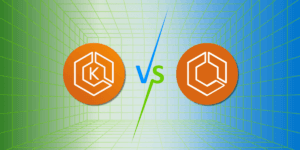In today’s fast-paced and competitive business world, lots of organizations are constantly looking for ways to improve their operations along with mastering AWS cost optimization. One approach has merged these goals and gained significant popularity in recent years, it is FinOps. In this article, we’ll take a closer look at what FinOps is, and 5 key facts that can help you better understand it.
What is FinOps?
FinOps (short for Financial Operations) is a practice that aims to optimize cloud costs by bringing together people, processes, and tools. This approach emphasizes collaboration between finance, operations, and engineering teams to ensure that cloud spending is transparent, accurate, and aligned with business objectives. FinOps provides a framework for managing cloud costs by leveraging automation, analytics, and data-driven decision making.
The Role of Automation
Automation is a key component of FinOps. By automating the process of monitoring cloud costs, organizations can gain real-time visibility into their spending and quickly identify areas where cost savings can be achieved. For example, FinOps tools can automate the process of tagging cloud resources, which makes it easier to track costs and attribute them to specific departments or teams. Automation can also be used to enforce policies around cost optimization, such as automatically shutting down unused resources.
The Importance of Collaboration
Collaboration is another essential aspect of FinOps. To effectively manage cloud costs, finance, operations, and engineering teams must work together towards common goals. By breaking down silos between these teams, organizations can achieve a more holistic view of their cloud spending and identify opportunities for optimization. Collaboration can also lead to better decision making, as teams can leverage their diverse perspectives and expertise to make informed choices about cloud resource allocation.
Need a simple AWS cost optimization solution?
The Role of Analytics
FinOps relies heavily on data analytics to inform decision making. By collecting and analyzing data about cloud spending, organizations can gain insights into where their money is going and identify areas where costs can be reduced. For example, analytics tools can be used to identify unused resources, spot trends in spending, and forecast future costs. By using data to drive decision making, organizations can optimize their cloud spending and achieve better financial outcomes.
The Benefits of FinOps
By adopting a FinOps approach, organizations can achieve greater cost transparency, which allows them to better understand their cloud spending and make informed decisions about resource allocation. FinOps also promotes collaboration and alignment between finance, operations, and engineering teams, which can lead to more efficient and effective use of cloud resources. And by leveraging automation and analytics, organizations can achieve significant cost savings, which can free up resources for other strategic initiatives.
In summary, FinOps is a practice that brings together people, processes, and tools to optimize cloud costs. It relies on automation, collaboration, and data analytics to achieve greater cost transparency and identify opportunities for cost savings. By adopting a FinOps approach, organizations can achieve better financial outcomes and free up resources for other strategic initiatives. If you’re looking to improve your organization’s cloud cost management, FinOps is definitely worth exploring.



